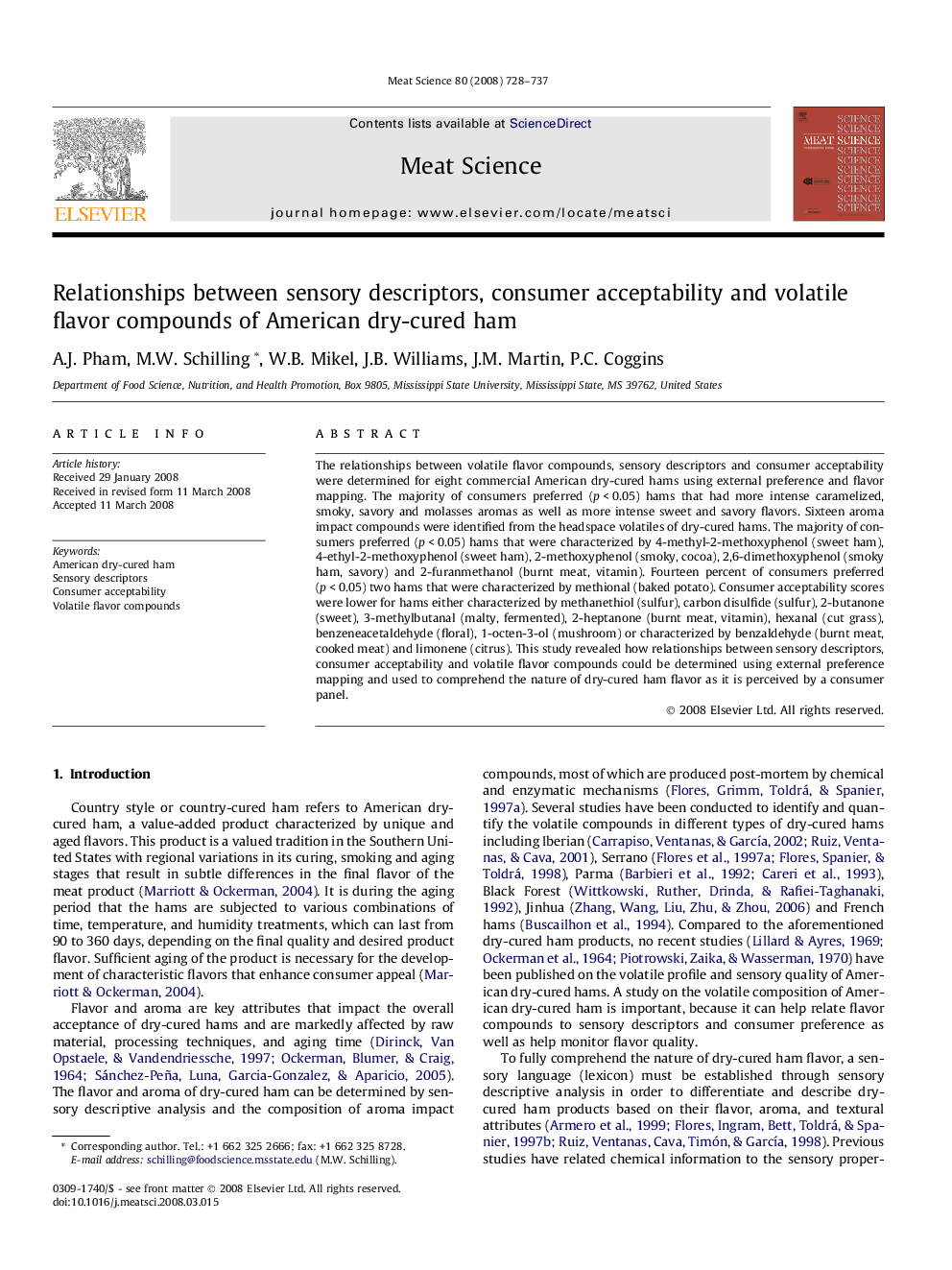| Article ID | Journal | Published Year | Pages | File Type |
|---|---|---|---|---|
| 2451375 | Meat Science | 2008 | 10 Pages |
The relationships between volatile flavor compounds, sensory descriptors and consumer acceptability were determined for eight commercial American dry-cured hams using external preference and flavor mapping. The majority of consumers preferred (p < 0.05) hams that had more intense caramelized, smoky, savory and molasses aromas as well as more intense sweet and savory flavors. Sixteen aroma impact compounds were identified from the headspace volatiles of dry-cured hams. The majority of consumers preferred (p < 0.05) hams that were characterized by 4-methyl-2-methoxyphenol (sweet ham), 4-ethyl-2-methoxyphenol (sweet ham), 2-methoxyphenol (smoky, cocoa), 2,6-dimethoxyphenol (smoky ham, savory) and 2-furanmethanol (burnt meat, vitamin). Fourteen percent of consumers preferred (p < 0.05) two hams that were characterized by methional (baked potato). Consumer acceptability scores were lower for hams either characterized by methanethiol (sulfur), carbon disulfide (sulfur), 2-butanone (sweet), 3-methylbutanal (malty, fermented), 2-heptanone (burnt meat, vitamin), hexanal (cut grass), benzeneacetaldehyde (floral), 1-octen-3-ol (mushroom) or characterized by benzaldehyde (burnt meat, cooked meat) and limonene (citrus). This study revealed how relationships between sensory descriptors, consumer acceptability and volatile flavor compounds could be determined using external preference mapping and used to comprehend the nature of dry-cured ham flavor as it is perceived by a consumer panel.
